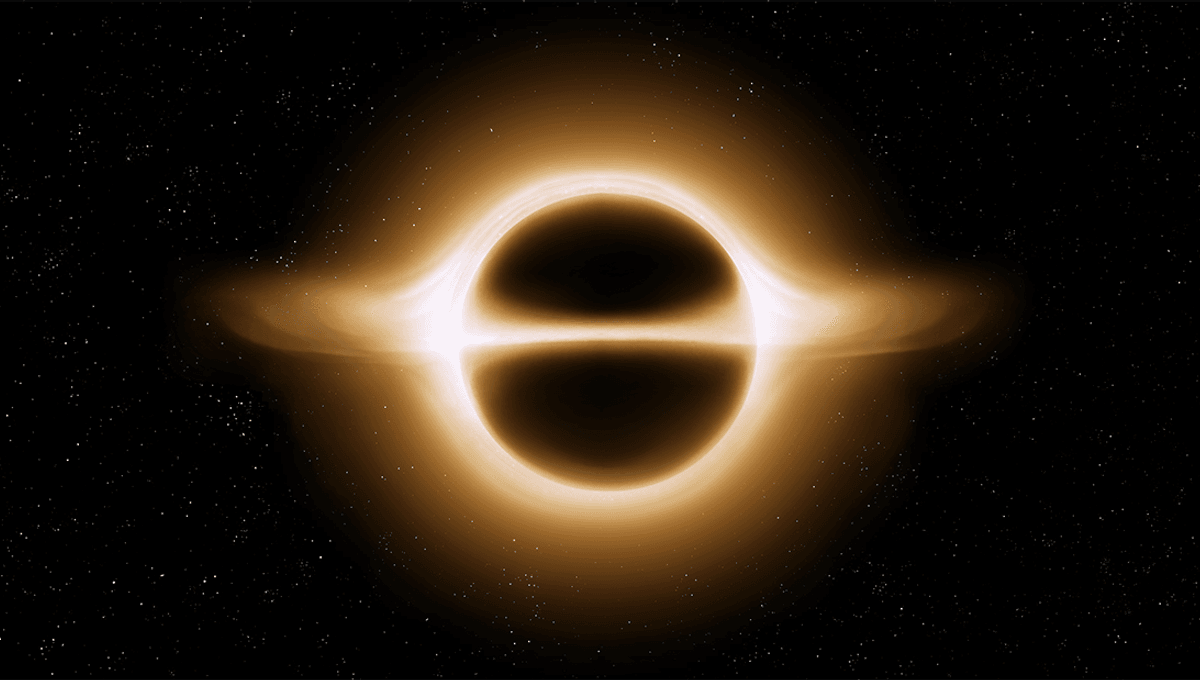
New research has looked at an alternative idea for what black holes are, suggesting that they might not be what we thought.
Black holes are an enormous source of gravity, “bubbles“, and headaches. Predicted as a result of Einstein’s general theory of relativity, they contain an outer region known as the event horizon – from which not nothing, even light can escape. As well as this, they are predicted to have an infinitely dense point where our understanding of physics breaks down, and nothing makes any sense.
That’s before we even get into the black hole information paradox. If a black hole has mass (and they have a lot of it) then they should have a temperature according to the first law of thermodynamics, and in line with the second law of thermodynamics, they should radiate heat. Stephen Hawking showed that black holes should emit radiation – now termed Hawking radiation – formed at a black hole’s boundary.
“Hawking then pointed to a paradox. If a black hole can evaporate, a portion of the information it contains is lost forever,” French astrophysicist Jean-Pierre Luminet explains in a 2016 essay. “The information contained in thermal radiation emitted by a black hole is degraded; it does not recapitulate information about matter previously swallowed by the black hole. The irretrievable loss of information conflicts with one of the basic postulates of quantum mechanics. According to the Schrödinger equation, physical systems that change over time cannot create or destroy information, a property known as unitarity.”
In short, we’re probably missing something, and physicists have been working pretty solidly since Karl Schwarzschild first described a non-rotating black hole in 1915 to make these problems go away.
While we know black hole-like objects exist, some physicists have suggested alternative explanations of what they actually are. One model is that they are not the black holes first described by Einstein’s equations (although the idea of black holes actually predates Einstein by over 100 years) but ultra-compact objects (UCOs) termed “frozen stars”.
“Frozen stars are a type of black hole mimickers: ultracompact, astrophysical objects that are free of singularities, lack a horizon, but yet can mimic all of the observable properties of black holes,” Ramy Brustein, professor of physics at Ben-Gurion University in Israel, explained to Live Science. “If they actually exist, they would indicate the need to modify in a significant and fundamental way Einstein’s theory of general relativity.”
One way that physicists have attempted to explain how singularities (regions of infinite density within a black hole) could be prevented is that quantum uncertainty prevents this collapse. In short, the Heisenberg uncertainty principle states that the more you know about a particle’s position, the less you know about its momentum. When matter inside a black hole is forced into a single point, according to this idea, particles would resist being squeezed into a precise point and generate a sort of “quantum pressure” pushing outwards and preventing a singularity.
While “frozen stars” would look a lot like the black holes we observe and infer when looking at our own galaxy and the wider universe, they differ in several enticing ways.
“The polymer model is premised on the notion that the interior of any regular object which successfully mimics a black hole (BH) should be in a strongly non-classical state, as follows from the idea that the uncertainty principle prevents the collapse of matter to a singularity, much in the same way that the quantum hydrogen atom is stable against collapse,” the team explains in their paper. “A strongly non-classical state is tantamount to having maximal entropy density, which in turn means maximally positive radial pressure for a state of fixed energy density. The frozen star model aims to mimic the properties of this highly quantum state in terms of a classical geometry, which amounts to ‘flipping’ the radial pressure from maximally positive to maximally negative.”
This string-theory-inspired alternative, explored mathematically in the paper, would describe a black hole that is similar to the ones we are familiar with, from their thermal radiation to their entropy, but without the associated singularities that cause so many headaches. This alternative also suggests that “frozen stars” may have a “firewall” within them in a highly excited state, preventing further collapse. More importantly, the differences could be observed with future gravitational wave detections from colliding black holes.
While intriguing and likely worth exploring given the problems with standard model black holes, far more work is needed to describe the interiors of this alternative model before any tests can be made or conclusions drawn.
The study is published in Physical Review D.
Source Link: Are Black Holes Really "Frozen Stars"? New Paper Suggests They Might Be